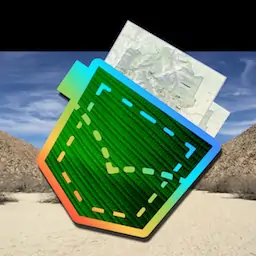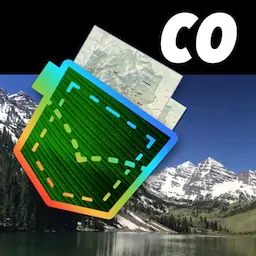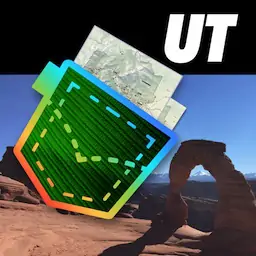"Hovenweep Castle" by U.S. National Park Service , public domain
Visitor GuideHovenweep |
Hovenweep
National Park Service
U.S. Department of the Interior
Hovenweep National Monument
Visitor Guide
Ancestors of today’s Pueblo people built the standing architecture of Hovenweep approximately 800 years ago.
Facts & History
President Warren G. Harding established
Hovenweep National Monument on March 2,
1923. The monument protects five prehistoric
ancestral Puebloan canyon-head villages located
along a 16-mile stretch of land intersecting the
Utah-Colorado border west of Cortez, Colorado.
The Square Tower Unit is the largest section of
the monument and contains the most extensive
archeological remains as well as the visitor center
and a 31-site campground. It is important that you
come to the visitor center first for an orientation
to the monument and assistance in planning your
visit. All of the state highways and county roads
leading to the Square Tower Unit from Cortez,
Colorado, and Blanding or Bluff, Utah, are paved.
In addition to the Square Tower Unit there are the
“outlying” units which include Holly, Horseshoe,
Hackberry, Cutthroat Castle, and Cajon. The
Holly, Horseshoe, and Hackberry units are
located about four miles northeast of Square
Tower. The Cutthroat Castle Unit is about eight
miles northeast of Square Tower, and Cajon is
about nine miles southwest. Significant portions
(one to two miles) of the roads leading to these
outlying units are unmaintained dirt and gravel; we
recommend a high-clearance vehicle for visiting
these sites.
Square Tower Unit offers the widest variety of
hiking opportunities. Here a self-guiding, twomile (3.2 km) loop trail will take you entirely
around the monument’s largest archeological
site and provide both panoramic and close-up
views of its canyon and well preserved structures.
Shorter hikes are also possible at Square Tower
including an accessible 300-yard (274 m) sidewalk
to a viewpoint overlooking a large portion of the
canyon. There are also short hikes at each outlying
site ranging from 0.25 to 1.6 miles (400 m to 2.5
km) roundtrip. The longest hike is an eight-mile
roundtrip (12 km) hike that connects the Square
Tower Unit with the Holly Unit, providing a longer
scenic backcountry hike.
The distinctive masonry found at
Hovenweep shows considerable
skill in construction techniques.
Hovenweep National Monument and its outlying
sites sit on a portion of the Great Sage Plain
known as Cajon Mesa. This region is defined by
deep, wide canyons fed by shallower tributary
drainages. Cajon Mesa tilts slightly to the south
causing the ephemeral runoff from its canyons
to eventually flow into the San Juan River. Aside
from rolling expanses of sagebrush, Cajon Mesa’s
plant communities include pinyon-juniper
woodlands in the higher elevations to the north
and desert shrublands to the south.
Human presence on Cajon Mesa can be traced
back as far back as 6,000 – 8,000 BCE (Before
Common Era). Nomadic hunter-gatherers
would pass through on their seasonal rounds,
camping near the springs located at the heads of
some canyons. Eventually people leading more
sedentary, agricultural lifestyles began settling
the region around 200 CE (Common Era). Cajon
Mesa remained relatively uninhabited until
approximately 900 CE. Then as the region’s
population grew and more land was needed for
agriculture, small home sites developed across the
more open southern expanses of the mesa.
For reasons not completely understood, in the
late 1100s and early 1200s, these more widely
dispersed habitations began consolidating into
communities around the water sources located
at or near canyon heads. This “aggregation”
appears to intensify with the onset of an
increasingly arid period that culminated with a
prolonged severe drought beginning in the 1270s.
The structural remains at Hovenweep represent
some of the best preserved examples of these
ancestral Puebloan canyon-head communities
in existence. Tree ring dating indicates most
of these structures were built in the mid-1200s
beginning in the 1230s and ending in the late
1270s.
By 1300 the Puebloan people throughout the
Four Corners region had departed, emigrating
primarily to central Arizona and the Rio Grande
valley in New Mexico. Their abandoned
communities at Hovenweep stood relatively
undisturbed for centuries until discovered by a
Mormon expedition in the mid 1850s. The Hopi,
Zuni, and Rio Grande Pueblo tribes are now
considered the modern-day descendants of the
people who created these memorable structures
centuries ago.
The land surrounding Hovenweep is held by the
Navajo Nation, Bureau of Land Management,
State of Utah, and private landowners. Respect the
regulations and property rights of these agencies
and individuals when travelling in the area.
BCE (Before Common Era) and CE (Common Era)
replace BC and AD.
Protect the Past
for the Future
We need your help to preserve Hovenweep National Monument. Here are several things you can do
that will protect Hovenweep for future generations:
• Stay on designated trails at all times and be
careful where you step. Walking off-trail
damages the biological soil crust which is vital
for erosion control and plant nutrition. It can
take decades for the crust to repair itself.
• Eat at picnic areas or the campground only,
and do not feed wildlife. Store food securely,
and throw all trash in receptacles provided.
Offering food or leaving it unattended can
attract animals and insects to places they do
not belong.
• Areas behind chain barriers are closed to
protect fragile archeological sites, soil, and
vegetation. Do not cross these barriers.
• Pets are allowed in the monument and on
trails, but must be leashed (six-foot maximum)
at all times.
Protect Yourself
• Take photographs; do not take artifacts,
no matter how small. Any person who
excavates, removes, damages, alters, or defaces
archeological resources on federal land is
subject to fine and/or arrest.
• Bring enough water for yourself and your
pet(s).
• Wear sunscreen and hat; rest often.
• Respect the plants and wildlife - some species
can be harmful.
Map
to Highway 491
and Pleasant View, CO
Paved road
Improved dirt road*
Unimproved dirt road* (high clearance recommended)
(see inset map)
4.
5
1.0
T
2.0
Hiking Trail
Mileage
Cutthroat
Castle
5.7
g
Horseshoe &
Hackberry
8
0.
High Clearance
vehicle required
beyond trailhead.
Cutthroat
Castle
(see inset map)
Holly
4.0
Visitor
Center
4.
0
* May become impassable after rain/snow.
NAVAJO
0.5
R E S E R VAT I O N
Horseshoe
Holly
to Hatch, Bluff
and Blanding
8
0.
Ismay
0.4
4.3
8
to Cortez via
McElmo Canyon
to
Aneth
COLORADO
10.0
Cajon
U TA H
2.
Oil Tanks
Hackberry
1.1
Square
Tower
NORTH
(5m 11/16)
EXPERIENCE YOUR AMERICA




